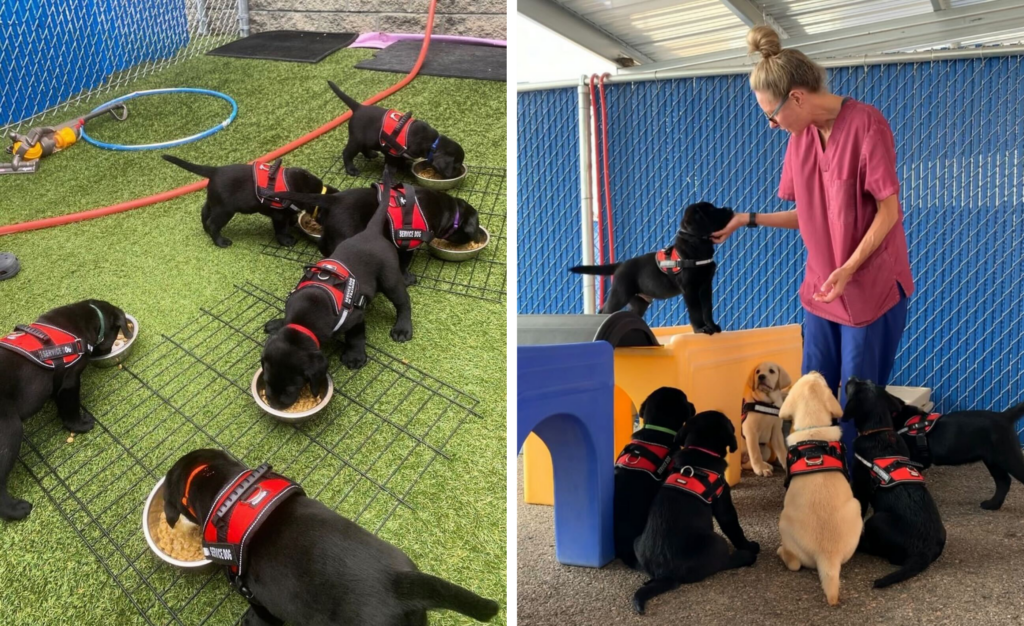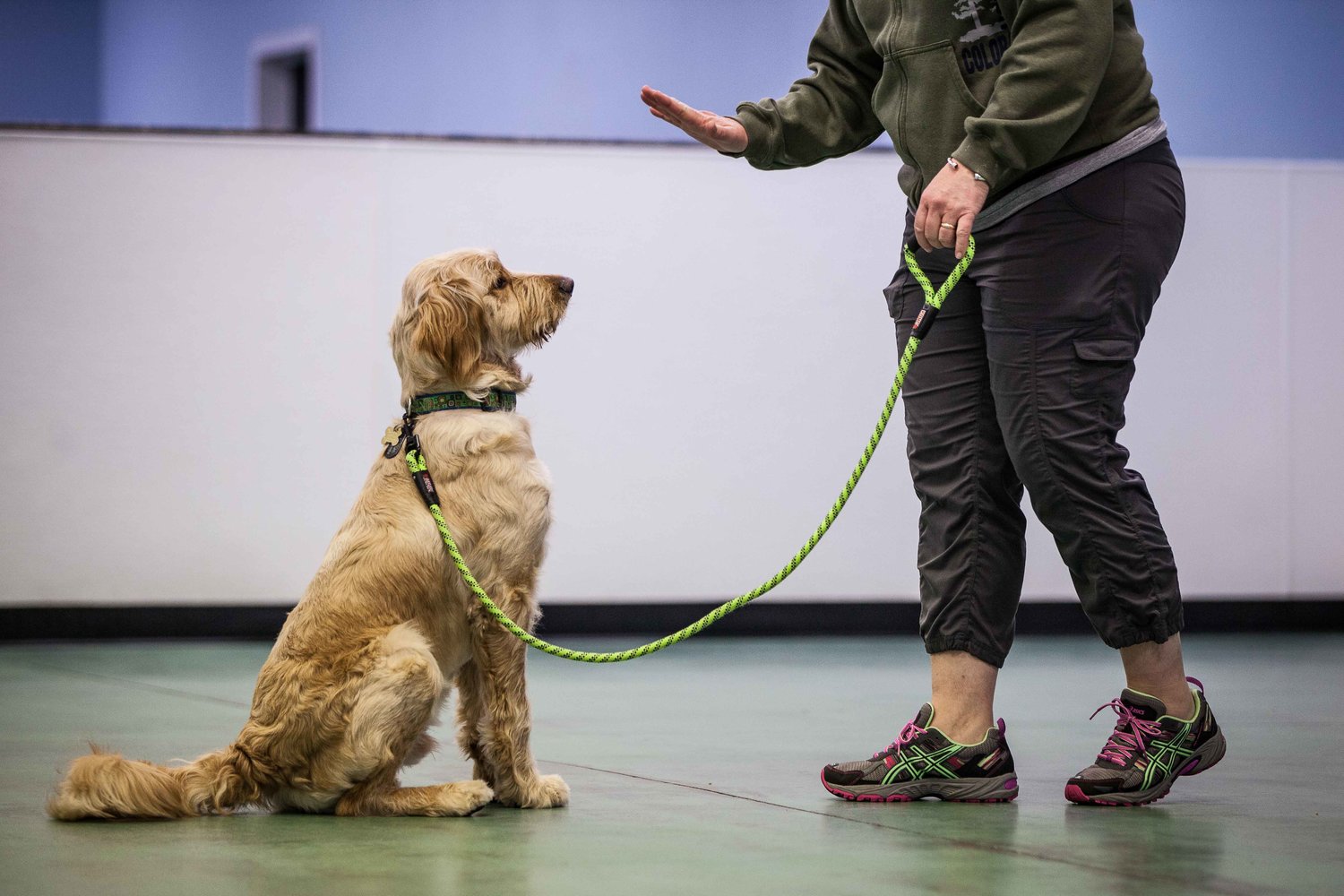Dog Training Rochester NY: Tailored Solutions for Every Dog's Needs
Dog Training Rochester NY: Tailored Solutions for Every Dog's Needs
Blog Article
Transform Your Pet's Behavior With Proven Training Methods
Transforming your pet's actions requires a nuanced understanding of their individual characteristics and demands, as well as the application of tested training techniques. By utilizing positive reinforcement and identifying essential add their body language, you can effectively resolve common behavioral issues such as excessive barking or jumping. Uniformity in your training approach not just boosts obedience yet additionally promotes a much deeper bond of count on and respect in between you and your pet. Nevertheless, the course to successful change might present unexpected challenges that warrant further exploration.

Understanding Pet Behavior
Recognizing dog habits is important for reliable training and interaction between people and their canine friends. Pets, as social pets, exhibit a series of actions influenced by genetics, setting, and experiences. Acknowledging these habits aids proprietors tailor their training approaches to satisfy the specific needs of their canines.
Secret aspects of dog behavior consist of body language, articulations, and social communications. In addition, socializing plays a critical duty in shaping behavior; pet dogs that engage favorably with numerous people and other pets are normally much more versatile and well-adjusted.
Additionally, acknowledging tension signals-- such as pacing, avoidance, or panting habits-- can prevent rise into a lot more major concerns. Proprietors who are attuned to their dog's behavior can create a nurturing and risk-free atmosphere, promoting count on and enhancing the training procedure. Eventually, a deep understanding of canine behavior lays the foundation for an unified connection and reliable training end results, making sure both dogs and their proprietors thrive with each other.
Favorable Support Techniques
Favorable support methods are extensively identified as one of the most reliable methods for training pet dogs, fostering a positive learning environment. This approach includes rewarding preferred actions with treats, praise, or play, consequently encouraging the canine to duplicate those actions (Dog training). Unlike corrective methods, positive support constructs trust and enhances the bond in between the trainer and the canine
Incentives ought to be offered quickly adhering to the desired habits to aid the pet dog make the connection. Uniformity is also necessary; making use of the very same commands and benefits assists the canine understand what is expected.
It is necessary to note that positive support is not regarding bribery; rather, it is about enhancing etiquette. Gradually, as the pet dog learns to link certain actions with favorable outcomes, the regularity of rewards can be slowly decreased, transitioning to spoken appreciation or intermittent benefits. This method not just motivates obedience but also advertises a pleased and confident pet dog, making training an extra satisfying experience for both parties entailed.
Attending To Common Concerns
Dealing with common problems during pet dog training is vital for ensuring a effective and unified partnership between the pet dog and its owner. Lots of canine proprietors encounter behavior challenges, such as extreme barking, leaping, and leash drawing. Comprehending the source of these behaviors is vital for effective training.
Too much barking may stem from boredom, anxiety, or an absence of socialization. To mitigate this, give adequate exercise, mental stimulation, and possibilities for social communication with both people and various other canines. Leaping can often be an indication of enjoyment or a need for attention. Training the pet dog to rest upon welcoming can redirect this behavior positively.
Leash pulling is another common problem, often resulting from a dog's eagerness to explore. Making use of proper chain taking care of strategies, incorporated with training procedures that motivate loose-leash walking, can substantially improve this behavior.
On top of that, concerns like resource guarding or separation stress and anxiety need tailored approaches. Gradual desensitization and counter-conditioning can be efficient in resolving these difficulties. By identifying and proactively handling these common concerns, pet owners can foster an extra satisfying training experience and enhance the bond with their canine companions.
Consistency in Training
Uniformity is a foundation of effective pet training, as it establishes a clear structure content for the pet dog to recognize actions and expectations. When signs, commands, and benefits are used evenly, pet dogs can much more conveniently realize what is needed of them. Inconsistent training can result in complication, resulting in unwanted behaviors that frustrate both the pet and the trainer.
To accomplish uniformity, it is vital that all participants of the home stick to the same training techniques. For circumstances, using the exact same spoken hints and hand signals ensures that the pet dog obtains consistent messages. Additionally, the timing of improvements and rewards ought to be constant; prompt support enhances the chance that the dog will connect the habits with the result.
In addition, establishing a regimen can additionally boost uniformity. Normal session, paired with structured schedules for feeding, walking, and playtime, help canines expect and comprehend their setting, making them a lot more responsive to training. Eventually, uniformity promotes a sense of protection and depend on, encouraging pet dogs to find out more successfully. By dedicating to a structured strategy, instructors can advertise positive behavior changes and grow a genteel buddy.
Structure a Strong Bond
How can promoting a solid bond between a pet and its proprietor improve the training experience? When a dog feels safe and secure in its link with its owner, it is extra likely to display favorable behaviors and be responsive to discovering.

Additionally, a well-established link can lower anxiety and behavior concerns, as pet dogs are less likely to act out when they really feel understood and cared for. Focusing on the growth of a solid bond not only enhances the training experience yet additionally adds to a better and a lot more well-adjusted canine. Ultimately, the trip of training transforms into a joint partnership, leading to lasting behavior enhancements.
Final Thought

Proprietors who are attuned to their canine's habits can produce a risk-free and caring setting, fostering count on and improving the training process. Eventually, a deep understanding of canine behavior lays the foundation for a harmonious connection and efficient training end results, ensuring both dogs and their owners prosper with each other.
Resolving usual concerns throughout pet look what i found training is important for guaranteeing a successful and unified connection between the canine and its owner Read Full Report (Dog training).Consistency is a cornerstone of reliable pet dog training, as it establishes a clear structure for the dog to comprehend habits and assumptions.In conclusion, changing a pet's habits with shown training methods requires an understanding of canine habits, the application of positive reinforcement strategies, and an emphasis on consistency
Report this page